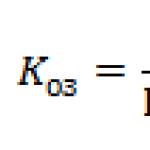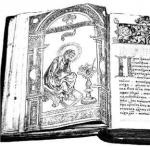OJSC Ashinsky Metallurgical Plant. OJSC "Asha Metallurgical Plant" Czech Republic comes to the rescue
Technical and economic characteristics of OJSC "Asha Metallurgical Plant"
Ashinsky Metallurgical Plant was founded in 1898. In 1992, the enterprise was transformed into the joint-stock company "Asha Metallurgical Plant", and in 2002 the plant was assigned the status of a city-forming enterprise. The plant began with blast furnace production. Open-hearth furnaces were built at the beginning of the 20th century, and its own rolling production in Asha appeared only in the second half of the century. Today the plant is a modern, dynamically developing enterprise of the Russian metallurgical complex. The company specializes in the production of a wide range of sheet metal products from both ordinary quality steel and low-alloy, structural, heat-resistant, corrosion-resistant and heat-resistant steel grades and alloys. In addition, the plant has mastered the production of the thinnest tape from corrosion-resistant, electrical, low-carbon steel grades, amorphous and nanocrystalline alloys, magnetic cores (transformer cores). And in 1971, the production of consumer goods from corrosion-resistant steel began. AMET brand consumer goods are widely known in Russia, including: dishes with a three-layer bottom, vacuum thermoses, cutlery and kitchen utensils. In recent years, the plant has mastered the production of gardening tools and metal doors from metal of its own production.
The plant has a certified and successfully operating quality management system. In March 2005, for its success in the production of high-quality products, the enterprise, as a participant in an international competition, was awarded a diploma from the International Academy of Quality and Marketing. Currently, preparations are underway for certification of the occupational safety and environmental protection system, work on the implementation of the automated system for monitoring the movement of financial resources Orakle Applications is almost completed, and serious attention is paid to personnel training. Annual report of OJSC "Asha Iron and Steel Works" for 2006.
The plant invests the profit received in the development of new products and the radical reconstruction of production. In recent years, the range of smelted metal grades has expanded significantly.
The plant has a clear program for further development of production, modernization of equipment, introduction of advanced technologies and development of new markets. In order to increase the competitiveness of products, our own energy generating complex was built and put into operation, which made it possible to almost completely cover the current demand for electricity. Currently, in the building of the future department of continuous casting of steel, a ladle-furnace unit (ALF) has been installed and the installation of a continuous slab casting machine (CCM) has begun. In the next 3 years, an electric furnace will be installed and a power line-800 will be built, rolling production and a complex for the production of consumer goods will be modernized.
With the launch of the caster, the Ashinsky Metallurgical Plant will have the opportunity to trade not only sheets, but also slabs. The yield of usable metal will increase, product quality will improve and its cost will decrease. With the launch of electric furnaces, the plant’s slabs and thick sheets will be able to compete on equal terms in the market with the products of large plants.
The products of Ashi metallurgists are of high quality and are in demand in the domestic and foreign markets. The ideal location of the plant on the Trans-Siberian Railway allows it to be delivered in the shortest possible time, including in small batches, to anywhere in Russia and the world.
According to the comprehensive rating publication “Ural Capital”, the Ashinsky Metallurgical Plant took 171st place based on the results of work in 2007 in the ranking of the 1000 largest enterprises of the Ural economic region and 27th among the 100 largest enterprises of the Chelyabinsk region.
OJSC "Asha Metallurgical Plant" (JSC "Asha Metallurgical Plant", Asha, Chelyabinsk Region) in 2005, compared to 2004, increased its sales volume by 15.5% to 7 billion rubles. Steel production in 2006 increased by 5%, plate production - by 3.3%. In 2008, OJSC Ashinsky Metallurgical Plant plans to increase steel production by 100 thousand tons to 650 thousand tons, rolled product production by 5% to 485 thousand tons. The company also plans to master the industrial production of expanded metal sheets for cranes and transition ladders in 2006. It is planned to install equipment for automated winding of magnetic cores at the EAF.
OJSC Ashinsky Metallurgical Plant (Asha Metallurgical Plant, Chelyabinsk Region) increased its share in PKP Promoborudovanie LLC (Naberezhnye Chelny, Tatarstan) from zero to 100%. Ashinsky Metallurgical Plant is a large producer of amorphous and electrical steels.
In 2002, JSC Ashinsky Metallurgical Plant exported 37.9 thousand tons of rolled plates, which is 177% more than in the same period last year. In 2003, the export volume of rolled plates at the Ashinsky Metallurgical Plant in the Chelyabinsk Region amounted to 15 thousand tons. This goal was set for the first time in 2003; before, Asha metallurgists had not supplied metal products abroad in such large volumes. See: Market news // www.metallprokat.ru..
Production and shipment of thick sheet metal in 2008 amounted to 471,192 tons including procurement, or 106.9% in relation to 2007.
Shipments to the domestic market of the Russian Federation amounted to 301,738 tons, shipments for export - 113,919 tons, shipments of billets for LPC-2 - 55,535 tons.
Thus, production and shipments in the Russian Federation and the CIS increased by 14.1% compared to 2007, production under export contracts increased by 1.1%. Total plate production increased by 6.9%; compared to 2007. Production trend compared to 2008/2007 is shown in Table 3.
Table 3
A significant limitation on the development of the metallurgical industry is the insufficient level of competitiveness of its products.
The most popular products of Ashinsky Metallurgical Plant OJSC are presented in Table 4.
Table 4. Annual report of OJSC "Asha Iron and Steel Works" for 2006
|
Group of manufactured goods |
Ratio 2008 to 2007 |
|
|
ROLLED FERROUS METAL, READY, INCLUDING BLANKET FOR EXPORT |
||
|
High-quality rolled sheets (without cold-rolled structural, stainless steel and transformer rolled products) |
||
|
Hot-rolled structural sheets |
||
|
Rolled structural hot-rolled alloy sheets |
||
|
CAST IRON, FERROALLOYS, LIGAURES, STEEL |
||
|
Steel (no steel for duplex process at own plant) |
||
|
Hot-rolled stainless steel sheets with a thickness of 4 mm or more |
||
|
Billets for rolling, pipes from ingots and forgings from ingots |
||
|
Rolled stainless steel |
||
|
ELECTRICITY, HEAT, WATER, ICE, COLD |
The countries to which the products were supplied are of great interest.
We present the data in the form of the following table:
Table 6. Buyers of products of OJSC "Asha Metallurgical Plant" outside the Russian Federation
|
Product type |
||||
|
Belarus |
Rolled sheets |
|||
|
Rolled sheets |
||||
|
Rolled sheets |
||||
|
Kazakhstan |
Rolled sheets |
|||
|
Rolled sheets |
||||
|
Other countries |
Rolled sheets |
|||
The main sources of cash receipts for Ashinsky Iron and Steel Works OJSC are the production shops of LPC-1 and LPTs-2. Based on this, the most important risk factors are:
1. The state of the global metal products sales market. With export sales limited, the supply of metal products to the domestic market sharply increases.
2. Raising tariffs by natural monopolies.
3. Limited steel production capacity.
4. Failure to provide the necessary volumes of basic raw materials for open-hearth production and rising prices for them.
5. Complete dependence in obtaining blanks for the production of stainless steel sheets and alloys for LPC-2 from external suppliers.
The Ashinsky Metallurgical Plant came to our attention relatively recently. Interest was aroused by the fact that the plant's bonds are traded on the Moscow Exchange at a price of 80-85% of par with a yield to maturity in 2024 of 13.4%. The coupon is tied to the Central Bank refinancing rate of +1.5% and is paid every six months. The next coupon payment is December 24 at a rate of 8.75%. Initially, the plant offered a premium for investors of only 1.5% of the Central Bank rate; subsequently, investors adjusted the premium for the risk of falling prices, and the yield is over 13%. And we decided to figure out how the real risks of the plant correspond to the proposed profitability.
Prepared on the basis of financial statements according to RAS, IFRS, annual and quarterly reports of the Ashinsky Iron and Steel Works
Offshore plant
The opaque ownership structure of the plant has a negative impact on the image of a public company. At the end of the third quarter of 2018, 78% of the shares belonged to 5 offshore companies, the owners of which are unknown. However, this was not always the case. Just 10 years ago, in 2008, UBS bank invested in the plant, and 22% of the shares belonged to the companies of the Ashinsky Iron and Steel Works group - CJSC Alliance and Profile.

In 2009, UBS reduced its stake in the shares, Veles entered the capital with a share of 31% and stayed there until 2012. But in 2012, the financial situation of the plant began to deteriorate, and investment funds withdrew from the capital. For the first time, the owners of offshore companies appeared in the quarterly report for the 1st quarter. 2013 As of October 15, 2012, 58% of all shares were purchased with them, i.e. the share of Veles and UBS Nominees. Subsequently - another 20%, and from 1 sq. In 2014, the structure of the plant's owners did not change. 
Ownership hypothesis
In 2011-2012, when the deal was being prepared and the first stage of the buyout of plant shares to offshore companies took place, the market capitalization was at the level of 3.1 billion rubles. Considering that this kind of transaction is the result of long-term planning, we will make a number of assumptions in the direction that the current owners of the plant are, after all, the company's top managers.The purchase of the plant's shares was planned back in 2009; this can be indirectly indicated by the dates of the creation of offshore companies. 21% of the shares could be in circulation, and 57% belonged to UBS Bank, another 22% already belonged to the plant's companies.
If the owners had bought the shares from UBS, they would have received a share of 79% in 2009. But this buyout did not take place and part of the shares ended up in the Depository Clearing Company, and part was bought by Veles Capital. But the idea of buying back shares did not last long.

2 years later, in 2011, the plant’s accounts receivable sharply increased in its reporting under RAS. Moreover, these funds are taken from the financial. plant investments. At the end of FY 2010 investments (long-term and short-term) 4.9 billion rubles. At the end of 2011, 650 million rubles. These funds were used to pay off financial debt and accounts receivable.

Accounts receivable in the amount of 2.52 billion rubles were held by 4 offshore companies registered in Belize, Seychelles and Panama. It is also noteworthy that the amount of debt is 2.5 billion rubles. roughly corresponds to a share of 78-80% of the market capitalization of the plant in those years. 
At the same time, Ashinsky Metallurgical Plant indicated in its quarterly reports that these debtors were not affiliated with the plant, but in the consolidated statements these receivables were excluded from the calculations. This is evidenced by the comparable value of the consolidated receivables of the Ashinsky Iron and Steel Works group and a similar external indicator of the plant from the reporting according to RAS. Related companies have accounts receivable under RAS in the amount of no more than 200 million rubles, so only the parent company is analyzed.

Thus, 2.5 billion rubles were withdrawn from the plant’s working capital. But for what purposes? Based on the above facts, we can assume that the offshore debtor companies belong to the group companies and these funds were withdrawn for the future purchase of shares in the plant. Consequently, the plant’s shares were purchased using its own working capital. In the first quarter of 2016, these receivables were collected through one legal entity, Jeanette Group Limited (the receivables were also excluded in the consolidated statements). At the end of 2016, 1.5 billion rubles were repaid, and during 2017 another 550 million rubles. At the end of the 3rd quarter of 2018, the balance of these receivables was RUB 505 million.
Thus, although relying on indirect evidence, we can still assert that the plant belongs to its top managers. In this case, managers should be extremely interested in improving the market position of the plant and its financial condition.
The Czech Republic comes to the rescue
Now let's go back to the beginning of the period when investment funds began to withdraw from capital. At this time, the plant’s financial situation is deteriorating due to a decrease in revenue, which reached a local minimum in 2013.
The main reason for the decline in revenue was a drop in sales of flat products due to increased competition in the market, including due to increased imports of similar products from the CIS and, in particular, from Kazakhstan. Flat products account for 80 to 90% of all sales at Ashinsky Iron and Steel Works.

At this time, in 2011-2012, the plant launched a large-scale investment program for the construction of a new sheet rolling shop, which was designed to increase the production volume of flat products to 1 million tons per year, i.e. by approximately 50% of the current capacity of the plant. At that time, the project was estimated at 15 billion rubles, and it was planned to be completed in 2014. For these purposes, a foreign currency investment loan was issued at the Czech Export Bank. The plant planned to finance most of it from its own funds.

A pipe investment
In 2012, the company invested 2 billion rubles in the construction of a new production workshop. own funds, which are obtained through depreciation and working capital. Adjusted EBITDA of the plant in 2012 was 615 million rubles.In 2013, the investment program is gaining momentum - the volume of investments is 3.5 billion rubles, the total investment in the workshop is 5.5 billion rubles. In 2013, the entire volume was financed through a foreign currency loan. The plant's EBITDA dropped to 291 million, i.e. more than half, due to a decrease in depreciation charges and a 12% drop in revenue.
And the plant entered service in 2014. To continue the investment campaign, the credit line from the Czech Export Bank was fully drawn up. The plant invested another 2.4 billion rubles in the workshop, resulting in a total investment of 8.0 billion rubles, which were actually frozen for an indefinite period.

Currency losses
At the end of 2014, the euro exchange rate jumped one and a half times - to 70 rubles, as a result of which the company’s financial debt to the Czech bank increased to 7.7 billion rubles, which resulted in negative exchange rate differences of 2.4 billion rubles. and subsequent loss. On June 30, 2014, AMZ additionally placed a bond issue for 1 billion rubles, the funds from which could well have been used to repay increased payments on a foreign currency loan.

In 2015, the company managed to emerge from a loss in EBITDA, but the euro exchange rate continued to rise to 80 rubles. Even though the company repaid about 10 million euros of the debt, the loan only grew in ruble terms. Exchange differences amounted to 1.2 billion rubles, having decreased by 956 million rubles since 2014. The company curtailed the investment program for the construction of the workshop and allocated the funds to working capital and depreciation. The increased revenue also helped significantly, and as a result, EBITDA was positive - RUB 420 million. Investments in the workshop amounted to 190 million rubles.

In subsequent years, the plant's EBITDA recovered to the level of 2011-2012.

However, the plant is still unable to maintain the previous rate of investment and the project has stopped at the construction stage of the production facility. At the end of 2017, 8.8 billion rubles had been invested, although 6 billion rubles were initially planned. in construction and 9 billion rubles. for the purchase of equipment. The current activities of the plant make it possible to stably repay the financial debt to the Czech Export Bank and service the issue of bonds.

As you can see, AMZ, during the period of no fluctuations in the euro exchange rate, generates EBITDA of over 2 billion rubles, however, in the second half of 2018, the euro exchange rate again rushed to 80 rubles, which again will create exchange rate differences, cause an increase in interest payments, and at the end of 2018 d. it will be possible to observe a loss at the plant. Despite all the repayments, the amount of the debt in rubles has not changed since the end of 2016. All this does not allow the investment project to be completed, which requires at least another 9 billion rubles, which can only be obtained through new loans.
What will the market offer?
The Russian flat-rolled market is a “permanent segment”: sales and production volumes remain virtually unchanged from year to year, provided that the industry’s capacity is excessive. The average annual capacity utilization ranges from 70% to 80%, depending on the specific enterprise.

And here the question arises: will the plant be able to realize the additional production volume that the new workshop will give it, even if it is completed and equipped?
Even if the new workshop is launched and reaches its design capacity, this will give an increase in revenue of about 50%, since the main product is flat steel. In monetary terms, the increase could be about 10-11 billion rubles. The plant's EBITDA margin is 10%. With EBITDA from the project of 1.1 billion rubles. per year the payback exceeds 18 years.
At the same time, competition in the industry will only intensify, as EVRAZ intends to launch the production of sheet metal in the Russian Federation at the West Siberian Metallurgical Plant in Novokuznetsk. Planned investments: $490 million. Reaching design capacity is planned in 2022. The sales volume is 1.5 million tons per year, which is 3 times higher than the sales volume of AMZ. At the current production volume, EVRAZ will take a 5% share by reducing the share of competitors, since there are no significant prerequisites for growth in consumption of sheet metal in the Russian Federation.
Eventually
We believe that the plant belongs to its top managers, the people who ran the plant back in the 90s, when it first became a joint-stock company. There is no doubt that these people have an impeccable understanding of the metallurgical business, but they made only one mistake. They took out a foreign currency loan for an investment project and as a result of devaluation in 2014-2016. actually froze 8.8 billion rubles. investments. And the devaluation continued in 2018, which is why the body of the investment loan has not changed since 2016, although the plant annually repays 1 billion rubles. The plant's income is quite enough to cover current obligations without defaults, but is no longer enough to continue the investment campaign. Because of this, the funds will remain frozen. After 2020, the plant also has no prerequisites for increasing sales volumes, since EVRAZ is planning to enter the Russian flat-rolled market. As a result, we cannot say that investments in AMZ are attractive, but current holders should not immediately dump their securities - AMZ does not have any significant risks of default.

public corporation "Asha Metallurgical Plant"- one of the oldest ferrous metallurgy enterprises in the Chelyabinsk region. The plant is the largest producer of sheet metal in the country. The company's central office is located in Asha, Chelyabinsk region.
The company is a full-cycle enterprise providing processing of iron ore raw materials, smelting and subsequent deep processing of ferrous metals.
"Asha Metallurgical Plant" produces the following types of steel:
Nickel-free stainless steel;
. stainless steel containing nickel;
. carbon;
. grooved;
. increased strength;
. structural quality;
. corrosion-resistant, heat-resistant;
. for shipbuilding;
. for vessels and boilers;
. alloyed.
Factory AMZ produces various types of tapes, including: anisotropic electrical, isotropic electrical, corrosion-resistant, heat-resistant and amorphous tapes. Other types of products manufactured by the enterprise:
Nickel-based alloys;
. magnetic circuits;
. electromagnetic screens;
. powders from soft magnetic alloys.
The company's products are supplied to all regions of the country.
The plant began its work in 1898, when the first blast furnace was launched. Soon it was joined by other blast furnaces and open-hearth furnaces, but until 1952 the plant did not have its own sheet-rolling production. In 1952, 1959 and 1974, three sheet-rolling shops were opened on the territory of the plant. In the mid-80s, a decision was made to stop blast furnace production, and one open-hearth furnace was also stopped. There are only three open-hearth furnaces left at the plant. In 1986, a workshop for the production of steel pans and other consumer goods was opened.
In 1992, the company was incorporated and received the name JSC "Asha Metallurgical Plant". Subsequently, the enterprise was reorganized into an Open Joint Stock Company.
Over the past few years, the plant has been going through a period of radical modernization of production, as part of which a continuous casting machine (CCM) was launched in 2007. The plant also plans to stop operating obsolete open-hearth furnaces by building and launching in 2009 an electric furnace with a capacity of one million tons of steel per year.
The enterprise development strategy is aimed at the gradual modernization of outdated technological lines and the introduction of the latest developments. Due to this, the plant plans to increase the volume and range of products, providing its goods to the needs of not only industry, but also the population.
In 2007 OJSC "Asha Metallurgical Plant" sold goods in the amount of 9,503.70 million rubles. The company's net profit amounted to 1,343.20 million rubles.






